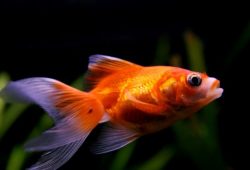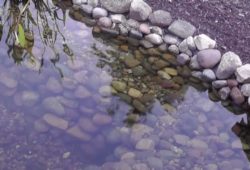How do Fish Survive at the Bottom of a Pond?
The article gives you some information on How do Fish Survive at the Bottom of a Pond?

Contents
- 1 Despite Freezing Temperatures, Fish May Live Through the Winter
- 2 Some Fish Have Special Antifreeze Proteins to Avoid Freezing
- 3 Properties of Water Can Protect Koi and Other Pond Fish and Prevent Freezing
- 4 Make Cold Winters Easier on Pond Fish Like Koi
- 5 Adapt Feeding to the Reduced Metabolism of Pond Fish
Despite Freezing Temperatures, Fish May Live Through the Winter
It’s winter, and it’s cold. Ponds are freezing over, and this includes many of the ponds in yards across the nations. It looks like it is a terrible time to be a fish in one of those ponds. Yet if the pond is deep enough and has oxygen, pond fish may actually survive. How is this possible?
Some Fish Have Special Antifreeze Proteins to Avoid Freezing
Some pond fish and other animals have a special adaptation that allows them to survive the winter. This antifreeze protein binds to ice crystals and prevents those crystals from growing larger. It’s when the crystals grow that they wreak havoc on an animal’s body, breaking apart the cell walls and causing damage to the fish as it freezes. These special proteins are found in fish species that live in very cold water.
Properties of Water Can Protect Koi and Other Pond Fish and Prevent Freezing
Even if a fish is not adapted to very cold water and does not have antifreeze in its body, it can survive the winter if a pond is at least a meter deep. Frozen water is less dense than liquid water. In a lake, the water at the bottom stays at a similar temperature for much of the year. In a pond, this means that the ice floats on the top and the warmer water stays on the bottom. During spring and summer pond maintenance, make sure that a pond is deep enough to help fish survive the winter.
Make Cold Winters Easier on Pond Fish Like Koi
Even if a fish is not naturally a cold weather fish, it may be able to survive a cold winter with some help. Fish slow down their metabolism when it gets cold. This means that they require less oxygen. In the winter, reduce the flow of any pump that circulates water from the bottom to the top of the pond, and vice versa. This avoids mixing the cooler top layer of the pond with the bottom layer, which tends to be warmer.
Adapt Feeding to the Reduced Metabolism of Pond Fish
As the temperature drops, the activity of the fish drops. So does the biological activity of filter media. Stop feeding the pond fish to ensure that the bottom of the pond does not become toxic and full of food. Also, try to avoid stocking the pond too heavily. Not only will this lead to too much waste in the pond and increase the need for filtration, it is also a stressful environment for the koi in the winter time.
Help pond fish survive the winter, even if they do not have antifreeze. Design a pond to allow ice to form but help the bottom of the pond stay warm. Adapt the pond circulation system to ensure that the warm water stays on the bottom.



